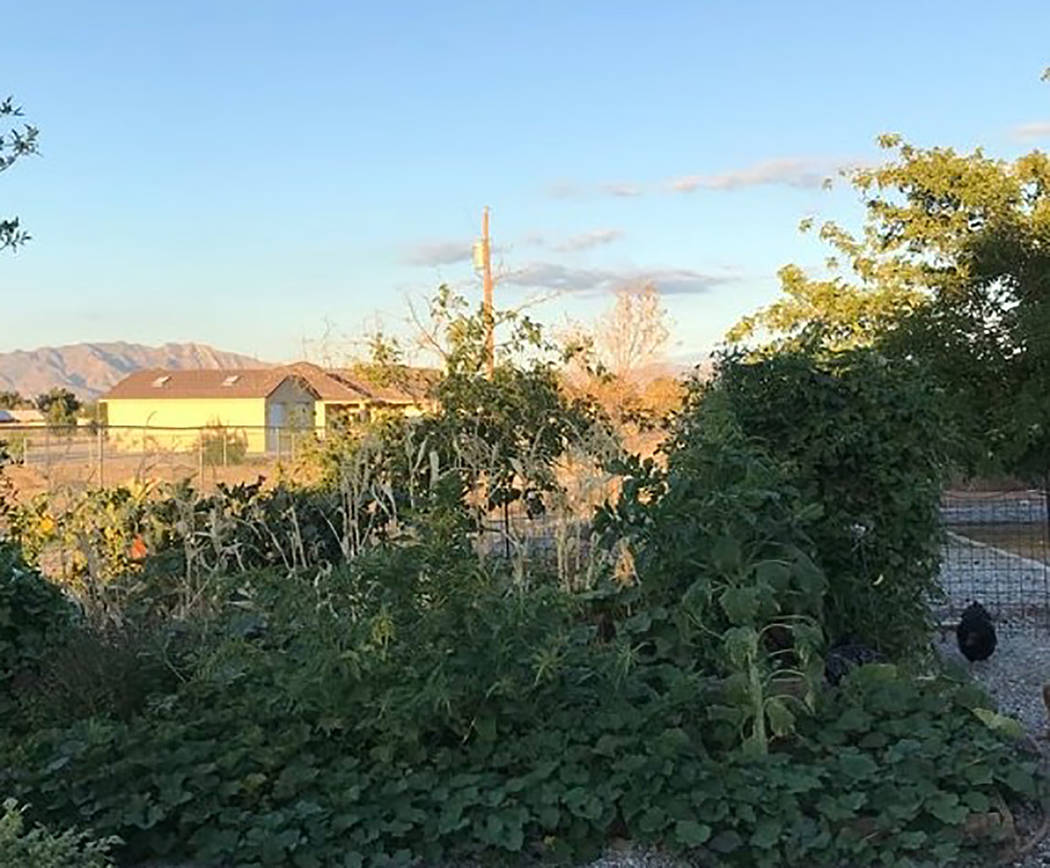In Season: Companion planting: The Three Sisters way
Companion planting has many benefits in a garden. Planting flowers with vegetables attracts pollinators. Tall heat-loving plants can provide shade to shorter shade-loving plants. One method of companion planting, the Three Sisters, has been used by Native American farmers for centuries and works well in our region.
A Three Sisters garden traditionally consists of corn, beans and squash, though there are other combinations that can be used. I’ve experimented with amaranth, beans, and sweet potatoes with some success.
The benefits of the Three Sisters method
Each plant in a Three Sisters garden aids the others. Corn provides support for the climbing beans which in turn draws nitrogen from the air and deposits it in the soil, providing nutrition for the corn and squash. Squash provides a living mulch which shades the roots of the corn and beans. It also suppresses weed growth and its prickly leaves are a deterrent for some pests.
When growing a Three Sisters garden, you should prepare your chosen spot at least one to two weeks ahead of time to give the planting bed time to settle.
Preparing for planting:
Choose an area for planting that receives at least 6 to 8 hours of sun. This is a case where more is better.
You will need a good amount of space for your Three Sisters patch. I suggest an in-ground bed 4 feet wide by 12 feet long. A longer bed is fine, but I would not make the bed any wider as it will be hard to reach into the middle. You want to avoid walking on the soil in the bed. Though growing this way is best done directly in the ground, I have had good results in raised beds.
The native soil should be dug out, sifted to remove large rocks and amended with compost to a depth of at least 6 inches. Corn is a heavy feeder and will benefit from added nutrition. Native Americans often buried fish under the area to be planted. I do not advise this for our region as it could attract rats and other pests.
Traditionally, a Three Sisters garden is grown in a series of mounds. In the desert it is more efficient to plant into a basin, which will help the bed to retain water. After sifting and amending the native soil, use a hoe to form the basin. Give it a raised edge of at least 6 inches. Direct seed your crop into the sunken area.
After preparing the planting bed it is important to choose the right varieties to grow. Choosing the right varieties is the key to success in a Three Sisters garden.
Varieties that work well in a Three Sisters garden
Corn: Corn varieties that work best for this method are dent and flour varieties. These varieties are meant to be left for drying on the stalk before harvesting. You can use a sweet corn, but it may be hard to tell when your corn is ready to harvest as the stalk will be covered with vining beans. One of my favorite varieties to use is ‘Glass Gem’, which is not only beautiful but makes an excellent popcorn.
Beans: Pole beans are best for a Three Sisters garden. Just like the corn, this method is meant for beans that are left on the vine to dry instead of eating fresh. ‘Scarlet Runner’ bean is a variety that I have had success with. Its red flowers attract pollinators as well.
Squash: Nearly any variety of winter squash will work. Their vines will sprawl through the bed without crowding out the corn and beans. I like to use butternut squash for this purpose. I find the yield to be much higher than other winter squash and it has less problems with squash vine borer and squash stink bugs.
Once you’ve prepared your planting bed and chosen the varieties you would like to grow, it is time to plant.
Planting your Three Sisters garden
Plant the corn first in early April. Corn is wind pollinated and should be planted in a grid for a higher yield. Plant the seeds with a spacing of 1 foot apart at a depth of 1 inch. The plantings should be alternated in a diagonal pattern between the rows. A 4-by-12-foot bed can fit 48 stalks of corn planted in 4 rows with each row containing 12 stalks.
Once the corn has grown to 4 to 6 inches tall it is time to plant the beans. Plant 4 beans in a circle around each stalk of corn at a spacing of 3 inches from the stalk at a depth of 1 inch. Give your beans a head start by soaking them in water the night before planting.
When your beans are 4 to 6 inches tall, start training them to wrap around the corn stalk and plant your squash. Plant 2 squash 2 feet apart at the long ends of the bed and 2 more on alternate edges in the middle of the bed at a depth of 1 inch.
The squash will sprawl from the edges of the bed and overlap as they grow toward the other end. If the squash begins to climb the corn stalks, gently pull the vines away and train them to sprawl on the ground.
Your Three Sisters garden will be ready to harvest by early to mid-November, though the butternut squash can be harvested as soon as it is ripe. With proper storage, a few hours of work through the season will provide you with a bounty that can last until spring.
Terri Meehan is the founder of Southern Nevada Gardening Association a regional group. She is a garden mentor and local farmer in Pahrump. Send questions or comments to her at sonvgarden@gmail.com
















